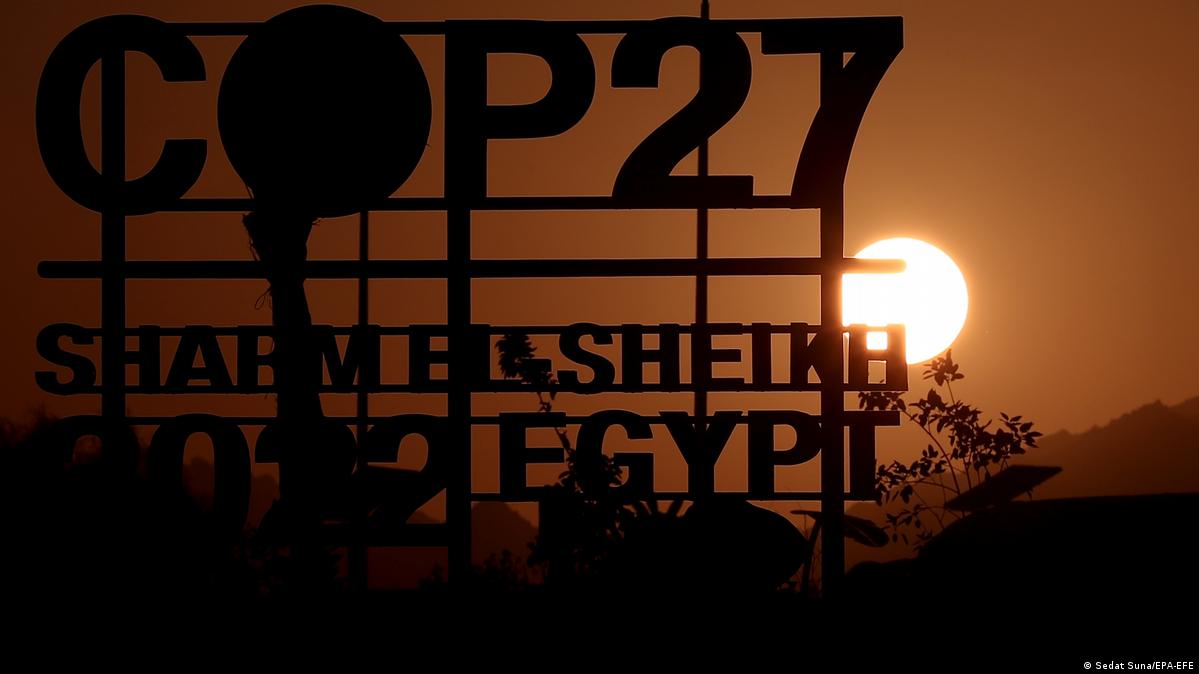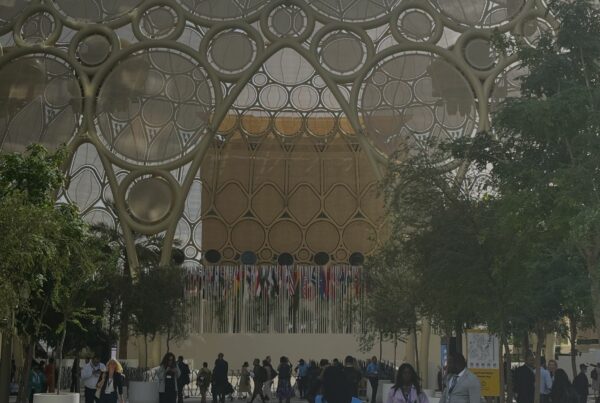Designated “City of Peace” in 1982, Sharm is Las Vegas meets Blackpool meets Goa. Where mini Taj Mahals and Hollywood theme parks rub shoulders with casinos, clubs, stunning beaches and coral reefs. A place where tens of thousands of diplomats, politicians, campaigners and not a few gas lobbyists will meet in suitably broiling, baking conditions to tackle the climate crisis.
Sameh Shoukry, Egyptian Minister of Foreign Affairs and COP27 President laid it on the line on Sunday in a bleak message to delegates. “Multilateralism is being challenged by geopolitics, spiralling prices and growing financial crises, while several countries battered by the pandemic have barely recovered and severe and depleting climate change-induced disasters are becoming more frequent.” Add into the mix reports of a human rights crackdown and you have to ask: In three decades of COP meetings, is this the toughest backdrop yet?
The last two days could well be a portend of what is to come. Talks to agree an ‘agenda’ for COP27 dragged on through the weekend, according to Shoukry. Top of the list: Loss and damage. To be precise, three agendas were up for discussion. The headline COP27 agenda does include loss & damage, as does the CMA agenda, which mandates work under the 2015 Paris Agreement.
The deal struck to allow loss and damage onto the agenda sets 2024 as a deadline to deliver a plan. That’s far too slow for some, notably Mohamed Adow from Power Shift Africa, who said it left talks “like a car that stalls on the starting grid… we need to see the loss and damage funding facility agreed here in Egypt.” It also (for now, but only for now as a footnote makes clear) avoids talks on compensation & liability, a red line for the US and other rich, developed nations that fear being left on the hook to cough up.
Still, this is of course just an agenda item, not a deal. As World Resources Institute CEO Ani Dasgupta pointed out: “We still have a marathon ahead of us.” A new loss & damage fund by 2024 is the “bare minimum” according to the 39-strong Alliance of Small Island States. Further challenges lie ahead, evidenced by the US suggesting it could back loss and damage support if China also came on board. Much of this depends on how you calculate who’s to blame. The world’s top current polluter is China, but the largest cumulative polluter is – as Carbon Brief details here – the US.
Clean African energy
For those at COP, prepare for two days of chaos as world leaders descend en masse. On Friday, the Egyptian government said 121 heads of state and top officials would rock up from Monday, clogging the roads with convoys and aggressive security details. The fun starts at 13.30 – we expect UN Secretary General Guterres and new UN climate boss Simon Stiell to lay into watching dignitaries for the poor level of delivery off the back of last year’s Glasgow Pact.
(Find the latest list here).
Kenya’s new President Ruto should, apparently, not be missed – expect a clear call for Africa to back clean energy, and more funding for the clean transition and loss & damage. Kiribati, Colombia, France, the UK, Saudi Arabia, Germany and Italy’s new far-right PM Giorgia Meloni are among others to outline their plans. Tuesday’s top four leaders include South Africa, Barbados and flood-battered Pakistan. A last-minute addition (not on the agenda) will also include a Leaders event on the Global Forest Declaration.
One man under huge pressure this week is Stiell, a Grenadian politician who won the UN’s top climate job in August. Folks are starting to pick up on the marked shift in tone from the UNFCCC since he took over. Take his Sunday speech: “We will be holding people to account – be they presidents, prime ministers or CEOs.” Expect accountability, transparency and delivery to lace his speeches through COP27. The key question – as ever – are the major leaders listening?
COP27 reports… in a line
-UNEP Emissions gap: It’s a big gap, and widening. The world is heading towards “economy-destroying levels of global heating,” says UNSG
-WMO State of the Climate: 2015-2022 are the eight warmest years on record, the average global temperature rise is 1.15C
-The first land gap report: Countries need an area larger than the US and equivalent to the world’s total cropland for assumed carbon removal projects to meet 1.5C
-IEA WEO: Fossil fuels are driving inflation, gas is no transition fuel as global demand looks set to peak
-Lancet Countdown: Governments continue to subsidise fossil fuels despite threats to the health and survival of all people
-CREA: EU energy emissions down 6% over the past three months thanks to major efficiency measures in response to the Russian war.
Forest protection
What counts as an emissions removal is being hotly debated in the new body created under Article 6 (6.4) to set the rules for the new carbon market. You may think by now we’d know what counts as an emissions removal, but the latest version of the text is fuzzy on important definitions around longevity. It’s now up to the CMA to accept or edit, but offsets keep getting tossed around as a way of enticing private finance to the climate action table, so these details matter.
Brazil, Indonesia and D.R. Congo, home to 52% of the world’s intact tropical forests, are reportedly in talks about creating an OPEC for forests, using their ecological clout to weigh into debates on money and markets. There’s no doubt the idea of funding countries to protect forests is gaining ground, but what such a coalition would mean in practice is unknown, especially as deforestation continues apace in all three countries.
Food systems represent 30% of GHG emissions and the main forum to discuss action is the Koronivia Dialogue, which got off to a rocky start after the parties could not agree on the basis of the text to discuss. The Dialogue’s mandate ends this year, so unless something concrete comes out of COP27, this significant chunk of emissions won’t get scrutinised.





